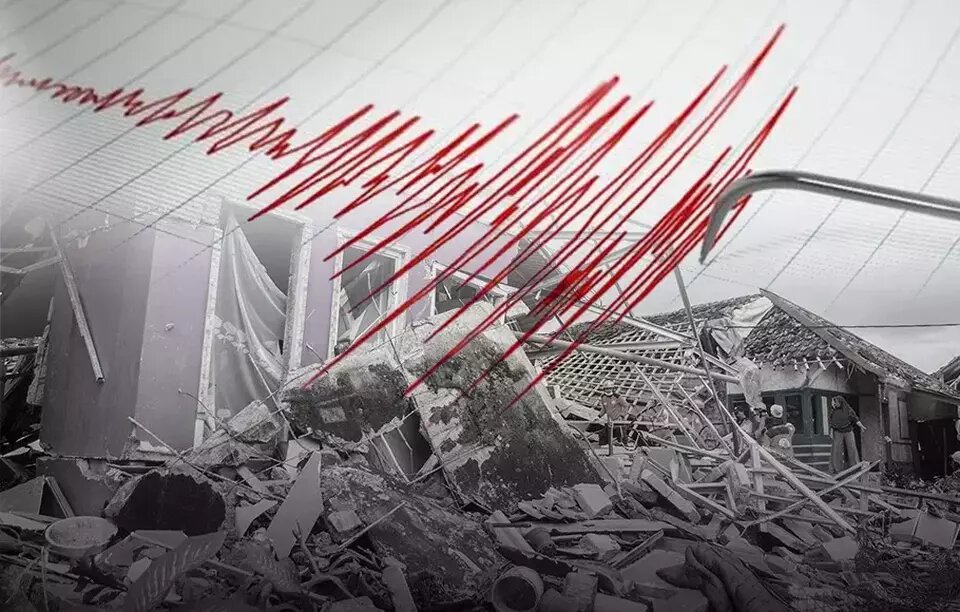Massive Earthquake Rocks Mindanao Island in the Philippines: What You Need to Know
On April 16, 2023, a significant seismic event struck the Philippines’ Mindanao island, registering a magnitude of 5.5. This earthquake has attracted attention not only due to its strength but also because of its potential impact on the region. As residents grapple with the aftermath, understanding the implications of such natural disasters becomes crucial.
The European-Mediterranean Seismological Center (EMSC) has confirmed the earthquake’s occurrence, providing vital information to both local authorities and international observers. Earthquakes are a frequent occurrence in the Philippines, a country situated on the Pacific Ring of Fire, where tectonic activity is prevalent. Below, we delve into the details surrounding this earthquake and what it means for the affected areas.
Details of the Earthquake
According to reports, the earthquake struck at a depth that could influence its effects on the surface. Here are some key details regarding the event:
- Magnitude: 5.5
- Location: Mindanao Island, Philippines
- Depth: Information on depth is crucial as it can determine the severity of shaking experienced on the surface.
- Time of Occurrence: The specific time of the quake was not indicated but typically is noted for emergency responses.
Impact on Mindanao Island
The impact of earthquakes can vary significantly based on several factors, including magnitude, depth, and proximity to populated areas. Mindanao, being one of the largest islands in the Philippines, has a diverse population and infrastructure that could be affected. Some of the common consequences of earthquakes include:
- Structural Damage: Buildings and infrastructure may sustain damage, leading to potential hazards for residents.
- Displacement: Residents may be forced to evacuate their homes, seeking shelter in safer areas.
- Emergency Response: Local authorities are typically mobilized to assess damage and provide assistance to those affected.
- Aftershocks: Following a significant earthquake, aftershocks are common, which can further complicate recovery efforts.
In the wake of this earthquake, the local government is likely to implement emergency protocols to ensure the safety and wellbeing of its residents. This may include:
- Conducting damage assessments to determine the extent of destruction.
- Providing immediate aid to those in need, including food and shelter.
- Establishing communication channels to keep the public informed about safety measures and updates.
Preparedness and Safety Measures
Earthquakes serve as a reminder of the importance of preparedness. Communities in seismically active regions like the Philippines are encouraged to take proactive steps to ensure safety during such events. Some recommended safety measures include:
- Emergency Kits: Prepare an emergency kit that includes essential items such as food, water, medications, and first aid supplies.
- Evacuation Plans: Create and practice evacuation plans to ensure families know how to respond quickly.
- Awareness Programs: Participate in local awareness programs that educate residents about earthquake risks and safety protocols.
The Role of Technology in Earthquake Monitoring
Modern technology plays a crucial role in monitoring seismic activity. Organizations like the European-Mediterranean Seismological Center provide real-time data and analysis, helping to inform the public and authorities about earthquakes. Some technological advancements in earthquake monitoring include:
- Seismographs: Instruments that measure and record the motion of the ground during an earthquake.
- Early Warning Systems: Systems that can provide alerts seconds before shaking begins, allowing people to take cover.
- Data Analysis: Utilizing big data to analyze patterns in seismic activity, which could help predict future earthquakes.
As the situation unfolds in Mindanao following the 5.5 magnitude earthquake, it is essential to stay updated through reliable news sources and local authorities. The resilience of communities and the support of emergency services will be critical in navigating the aftermath of this seismic event.
In conclusion, earthquakes like the one experienced in Mindanao remind us of nature’s power and the importance of preparedness and community resilience. With the right measures in place, affected communities can recover and rebuild stronger than before.






